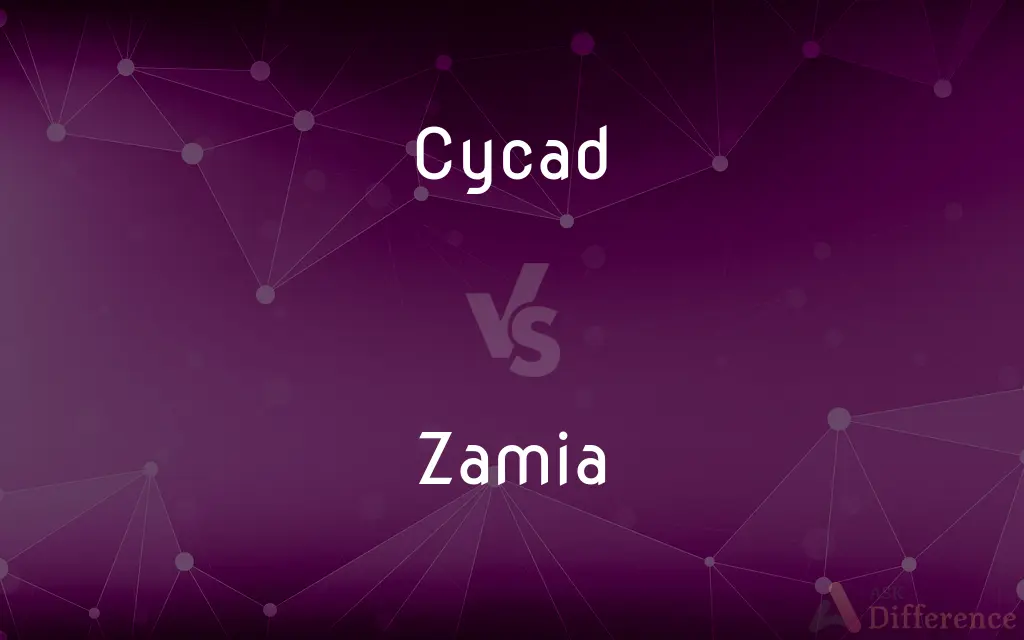Cycad vs. Zamia — What's the Difference?

Difference Between Cycad and Zamia
ADVERTISEMENT
Compare with Definitions
Cycad
For the insect, see Cicada.Cycads are seed plants with a very long fossil history that were formerly more abundant and more diverse than they are today. They typically have a stout and woody (ligneous) trunk with a crown of large, hard and stiff, evergreen leaves.
Zamia
Zamia is a genus of cycad of the family Zamiaceae, native to North America from the United States (in Georgia and Florida) throughout the West Indies, Central America, and South America as far south as Bolivia.
Cycad
Any of various gymnospermous cone-bearing evergreen plants of the division Cycadophyta, native to warm regions and having large pinnately compound leaves.
Zamia
Any of various chiefly tropical American cycads of the genus Zamia, having a thick, usually underground stem, palmlike terminal leaves, and seeds borne in woody cones.
Cycad
(botany) Any plant of the division Cycadophyta, having a stout and woody trunk with a crown of large, hard and stiff, evergreen leaves.
ADVERTISEMENT
Zamia
Any of various cycads of the genera Zamia and Macrozamia
Cycad
Any plant of the natural order Cycadaceæ, as the sago palm, etc.
Zamia
A genus of cycadaceous plants, having the appearance of low palms, but with exogenous wood. See Coontie, and Illust. of Strobile.
Cycad
Any tropical gymnosperm of the order Cycadales; having unbranched stems with a crown of fernlike leaves
Zamia
Any of various cycads of the genus Zamia; among the smallest and most verdant cycads
Share Your Discovery

Previous Comparison
Postmaster vs. Postman
Next Comparison
Evolutionally vs. Evolutionarily













































